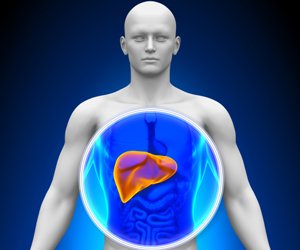Lower Dose of Acetaminophen Linked to Reduced Serious Liver Injury

To examine the effect of this change, researchers in the JAMA study looked at yearly rates of hospitalization and acute liver failure cases in two independent, contemporaneous data sources, the National Inpatient Sample, or NIS, and the Acute Liver Failure Study Group, or ALFSG. The NIS is a very large U.S. hospitalization database with more than 473 million hospitalizations from 2007 to 2019. The ALFSG is a prospective, 32 U.S. medical-center cohort of adult patients with acute liver failure from 1998 to 2019.
In each data source, Locke and colleagues found similar declines in the yearly rates of hospitalization and acute liver failure cases associated with acetaminophen-opioid medications after the mandate. They also compared toxicity seen from acetaminophen-opioid medications versus toxicity from acetaminophen alone. In contrast to the declines from acetaminophen-opioid medications after the mandate, rates of hospitalization and acute liver failure cases associated with acetaminophen alone – where the dosage is not constrained by the FDA continued to rise after the combination drug mandate.
Advertisement
The detailed results looked at four groups: NIS
As an example of detailed findings, in the NIS group, the predicted incidence of hospitalizations associated with acetaminophen-opioid toxicity one day prior to the FDA announcement was 12.2 cases per 100,000 hospitalizations. By Q4 2019, it was 4.4 cases per 100,000 hospitalizations. The odds of a hospitalization involving acetaminophen-opioid toxicity increased 11 percent per year before the announcement and decreased 11 percent per year after the announcement.
In the ALFSG group, the predicted percentage of acute liver failure cases from acetaminophen-opioid toxicity one day prior to the FDA announcement was 27.4 percent. By Q3 2019, it was 5.3 percent. The percentage of acute
The NIS database included 39,606 cases of hospitalizations involving acetaminophen-opioid toxicity, and the ALFSG database had 2,631 patients hospitalized with acute liver failure, including 465 with acetaminophen-opioid toxicity.
The authors caution that the study shows association, not causality. The changes in hospitalizations could also have come from increased public awareness and stiffer label warnings required by the FDA as part of the mandate, or changes in clinician prescribing patterns. However, in Canada, changes in labeling without an accompanying limit in the acetaminophen dosage was not associated with a decline in hospitalizations.
Source: Newswise
Source link
#Dose #Acetaminophen #Linked #Reduced #Liver #Injury



